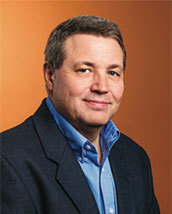It's time for a sensible approach to climate change
The science is quite clear for those willing to heed the signs. Our world is warming at an alarming rate, and there will be serious consequences if we don't act. The average worldwide temperature is rising at twice the rate of 50 years ago. Global surface temperatures have increased 1.6 degrees in the past 100 years. That doesn't seem like a lot, but for a balanced ecosystem, it's taking a drastic toll.
In 1910, there were 150 glaciers in Montana's Glacier National Park. Today, there are fewer than 30. Polar ice caps are also melting, causing sea levels to rise—potentially by as much as 32 inches by the end of this century, according to some models. That will not only wreak havoc on nice beachfront property but will also have devastating effects on marine life, commercial fishing, coastal cities, and our port infrastructures.
We've all heard the arguments. Climate change is cyclical. We had periods when the earth was warmer and periods of ice ages. Things change, and animals disappear. It's part of nature. We don't have dinosaurs around anymore, which I guess is a good thing, as that would make a nice walk in the woods much more of an adventure.
Yet the changes we're seeing cannot be explained by mere natural cycles. Levels of greenhouse gases, such as carbon dioxide, methane, and nitrous oxide, have soared in the past 50 years. That is mostly due to the burning of fossil fuels.
I realize people have been burning things to cook and stay warm for thousands of years, yet we are only now seeing a problem? That's because global warming is not a result of burning logs in fireplaces. It's from coal powerplants and internal-combustion engines.
Adding to the problem is there are simply a lot more of us. It took until 1804 for the world's population to reach 1 billion people. It hit 2 billion in 1927 and 3 billion only 33 years later in 1960. We will reach 8 billion in 2023. All of us are contributing to the problem.
And it's only getting worse. Greenhouse gases are cumulative. They don't dissipate like smoke from a campfire but stay with us for thousands of years. The more we add each year, the more there is to cause problems for future generations.
The U.S. is the worst offender when it comes to greenhouse gas emissions per capita. Modern transportation networks account for 30 percent of that, including supply chains. It's time to set politics aside and stop pointing fingers. Instead, we need to look at what we can collectively do within our supply chains to reduce our carbon footprints. I will explore ways to do that next month.
Related Articles

Copyright ©2024. All Rights ReservedDesign, CMS, Hosting & Web Development :: ePublishing